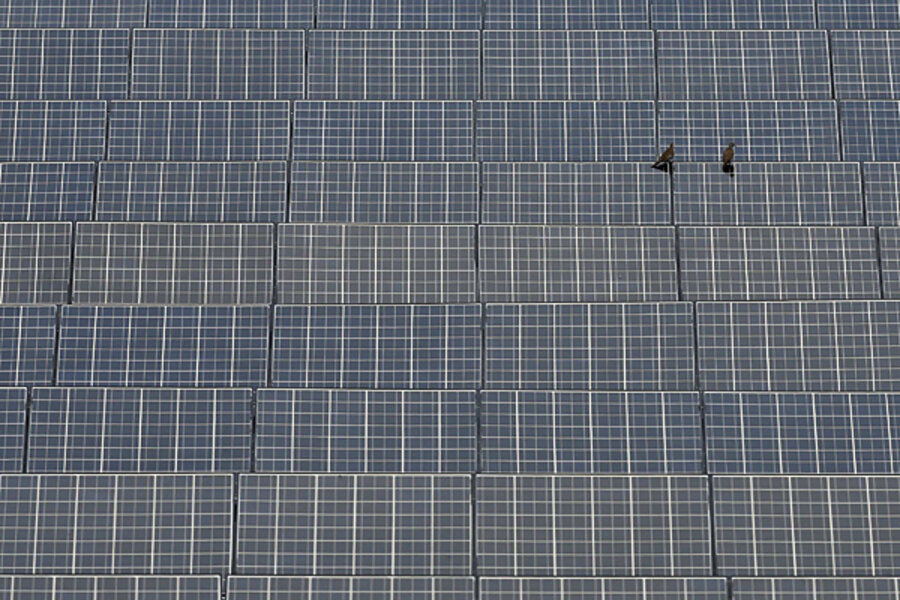Clean energy investment down, but not out
Loading...
To fund a global transition to a low-carbon economy, the clean-energy industry will need to attract hundreds of billions of dollars in new investment. For two straight years now, the opposite has happened.
Investment in clean-energy projects around the world slumped 12 percent last year to $254 billion, according to data released Wednesday by Bloomberg New Energy Finance (BNEF). It is the second year of declines since investment peaked at $317.9 billion in 2011.
It is a troubling trend for renewables, but a closer look at the industry reveals a less gloomy picture. Renewables' costs are falling, meaning clean-energy companies can do more with less capital. Those companies are also experimenting with new financing mechanisms that leverage the purchasing power of individuals and smaller organizations. And smart-energy innovators like Tesla Motors, Nest Labs, and SolarCity are among today's most coveted companies on Wall Street and in Silicon Valley.
“A second successive year of decline in investment will come as unwelcome news to the clean energy sector, but the top-line figures don’t tell the whole story," Michael Liebreich, founder and chairman of the advisory board for BNEF, said in a press release.
Uncertainty is anathema to investors, and 2013 saw a lot of it as major clean-energy pushes hit roadblocks. Subsidies were either curtailed or put on hold in Germany, Italy, and France, and the low price of EU carbon credits made fossil fuels more attractive. That pushed Europe's clean-energy investment down 41 percent to $57.8 billion last year – the largest decline worldwide, according to BNEF.
US investment in wind, solar, and other renewables slipped more modestly – down 8.4 percent to $48.4 billion. Investment in China fell 3.8 percent to $61.3 billion in 2013. It was the first year in over a decade that clean-energy investment has fallen in China.
Japan bucked the trend, with investment soaring 55 percent to $35.4 billion as the country leveraged small-scale solar to replace the nuclear power it took offline after the March 2011 disaster at the Fukushima Daiichi Nuclear Power Plant.
While investment fell, capacity increased. Solar power installations grew by around 20 percent to a new record, according to BNEF. The US Energy Information Administration expects wind, solar, and other non-hydroelectric renewables to account for more than a quarter of electricity generation growth through 2040.
Alternative-energy companies continue to generate buzz. Electric carmaker Tesla Motors sold a company record of 6,900 vehicles in the fourth quarter of 2013. Nest Labs, a leader in energy-efficient, web-enabled home products, was recently acquired by Google for $3.2 billion. SolarCity, a solar power company based in San Mateo, Calif., released a new web-based investment platform Wednesday aimed at generating new sources of capital.
“Previously, only institutional investors could participate in the financing of most solar assets," SolarCity chief executive Lyndon Rive said in a statement. "With our investment platform, we’re hoping to allow far more individuals and smaller organizations to participate in the transformation to a cleaner, more distributed infrastructure.”
It may not be enough. The world's leading investors – pension funds, insurance companies, foundations and investment managers – are investing about 2 percent of their combined $76 trillion of assets in clean energy, according to Christiana Figueres, the UN's climate chief, in an interview with The Guardian. Coal and oil, meanwhile, attracts about 10 or 15 percent of that investment.
"What we need to have invested in the energy sector and in the green infrastructure in order to make the transformation that we need in order to stay within [2 degrees Celsius of global temperature rise] is one trillion dollars a year and we are way, way behind that," Ms. Figueres told The Guardian.








